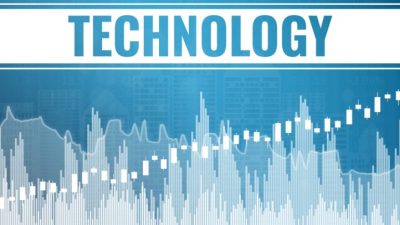The financial sector is undergoing a dramatic transformation, driven by rapid technological advancements and evolving consumer expectations. As we look ahead to the next big shift in the financial sector, it’s clear that innovation will continue to shape the industry in profound ways. From digitalization to blockchain, AI, and hyperpersonalization, the future of finance is being redefined.
The Role of Digital Transformation in the Financial Sector
Digital transformation has become a cornerstone of the financial industry, with institutions leveraging technology to streamline operations, enhance customer experiences, and drive efficiency. This transformation goes beyond simple digitization; it encompasses the integration of advanced technologies such as Open Finance, instant payment methods, and embedded finance.
Open Finance, for instance, allows seamless data sharing between financial institutions, creating a more integrated and transparent ecosystem. This not only facilitates access to financial services but also enables solutions like consolidated accounts and credit comparison tools. Additionally, with regulations like Drex in Brazil, there is an expectation to broaden access to the financial system and promote digital inclusion.
- Instant payment methods are transforming how transactions are conducted, enabling fast and secure payments without intermediaries.
- Embedded finance allows companies across various sectors to integrate financial services directly into their platforms, offering solutions such as payments, insurance, and loans seamlessly.
These innovations are not just trends—they are reshaping the market and setting the stage for the next big shift in the financial sector.
Cybersecurity: A Strategic Priority
As the financial sector becomes increasingly digital, cybersecurity is no longer just a technical concern—it’s a strategic priority. With the growing use of sensitive data, such as credit checks and risk analysis, protecting information and transactions has never been more critical.
Tools like biometrics, multi-factor authentication, and AI play a vital role in safeguarding data while enabling real-time transaction monitoring. According to a report from the International Monetary Fund (IMF), banks, insurers, and asset managers have faced over 20,000 cyberattacks in recent decades, resulting in $12 billion in losses for the global financial sector.
In 2025, credit and financial services personalization will require more sophisticated data analysis, always with a high level of security. Advanced technologies, such as machine learning, help mitigate credit risks but can also be applied in real-time fraud prevention.
- AI-powered fraud detection is becoming essential in identifying abnormal behaviors and preventing fraudulent transactions.
- Robust security solutions are crucial not only for protecting data but also for maintaining customer trust and the integrity of the financial system.
Cybersecurity is a key component of the next big shift in the financial sector, ensuring that innovation doesn’t come at the cost of safety.
Tokenization and Blockchain: Redefining Asset Management
By 2025, the adoption of disruptive technologies like blockchain and tokenization is set to revolutionize the way assets are managed and transacted. These technologies offer a decentralized, transparent, and secure infrastructure, making them ideal for modern financial ecosystems.
Blockchain allows for secure, tamper-proof record-keeping, while tokenization enables tangible and intangible assets to be divided into tradable digital fractions. This democratizes access to investments that were previously exclusive to large investors, promoting financial inclusion and enabling more people to participate in markets that were once inaccessible.
With the rise of digital currencies, stablecoins, and decentralized finance (DeFi), we are witnessing the emergence of a new financial era. Blockchain and tokenization facilitate fast, secure, and intermediary-free transactions, reducing operational costs and improving efficiency.
- Smart contracts are being used in blockchain-based insurance, streamlining processes and reducing administrative burdens.
- Stablecoins are applied in international transactions, eliminating intermediaries and making value exchanges more efficient.
These technologies are not only reshaping the financial ecosystem but also creating new forms of economic interaction, aligning with the next big shift in the financial sector.
Hyperpersonalization and Customer Experience
Hyperpersonalization is becoming a critical factor in the financial sector, enabling the creation of tailored offers using real-time data. In a competitive market, offering personalized solutions is essential for ensuring customer loyalty and satisfaction.
Financial institutions are leveraging advanced technologies, including high-performance AI such as Salesforce, Genesys, and RPA (Robotic Process Automation), to create seamless and effective customer experiences. The integration of these technologies allows for omnichannel automation, providing a unified customer view and optimizing repetitive processes.
- AI-driven personalization helps anticipate consumer needs and adjust products in real time.
- Omnichannel automation ensures continuous interaction, regardless of the channel, and enhances the overall customer experience.
Companies that adopt these strategies are better positioned to thrive in the evolving financial landscape, making hyperpersonalization a key driver of the next big shift in the financial sector.
Artificial Intelligence and Cloud Computing: Driving Innovation
Artificial intelligence (AI) and cloud computing are deeply transforming the financial sector, enabling greater agility, efficiency, and personalization in services. AI, with tools such as machine learning, predictive analytics, and AI agents, allows financial institutions to analyze large volumes of data and extract valuable insights in real time.
Cloud computing provides the infrastructure needed to scale these solutions economically and flexibly, without requiring large investments in physical hardware. When integrated, these technologies automate essential processes in the financial sector, from risk analysis to customer service and product personalization.
- AI-driven predictive analytics helps anticipate financial crises, detect fraud, and predict consumer behaviors with high precision.
- Cloud computing ensures scalability, allowing institutions to manage large volumes of data efficiently.
Platforms like Google Cloud and Microsoft Azure offer AI and machine learning solutions that help create predictive models, optimizing financial decisions and reducing risks. As AI and cloud computing become even more central to financial operations, they will play a pivotal role in the next big shift in the financial sector.
Conclusion
The next big shift in the financial sector is already underway, driven by digital transformation, cybersecurity, blockchain, hyperpersonalization, and AI. As these technologies continue to evolve, they will reshape the industry, creating new opportunities and challenges for financial institutions.
For businesses to thrive in this new environment, embracing innovation and adopting strategic technologies will be essential. Companies that effectively integrate these advancements will be better positioned to gain a competitive advantage and build trust with their customers.
The future of finance is not just about staying relevant—it’s about leading the charge in a rapidly changing world. By understanding and adapting to these transformations, the financial sector can unlock new possibilities and drive sustainable growth.












